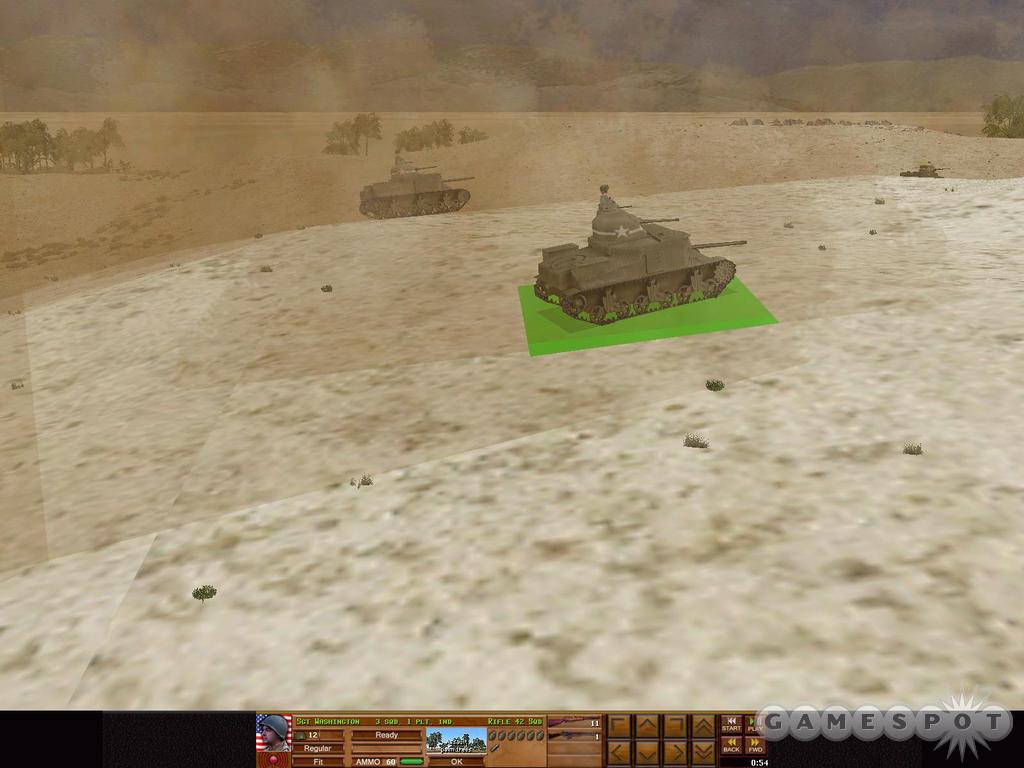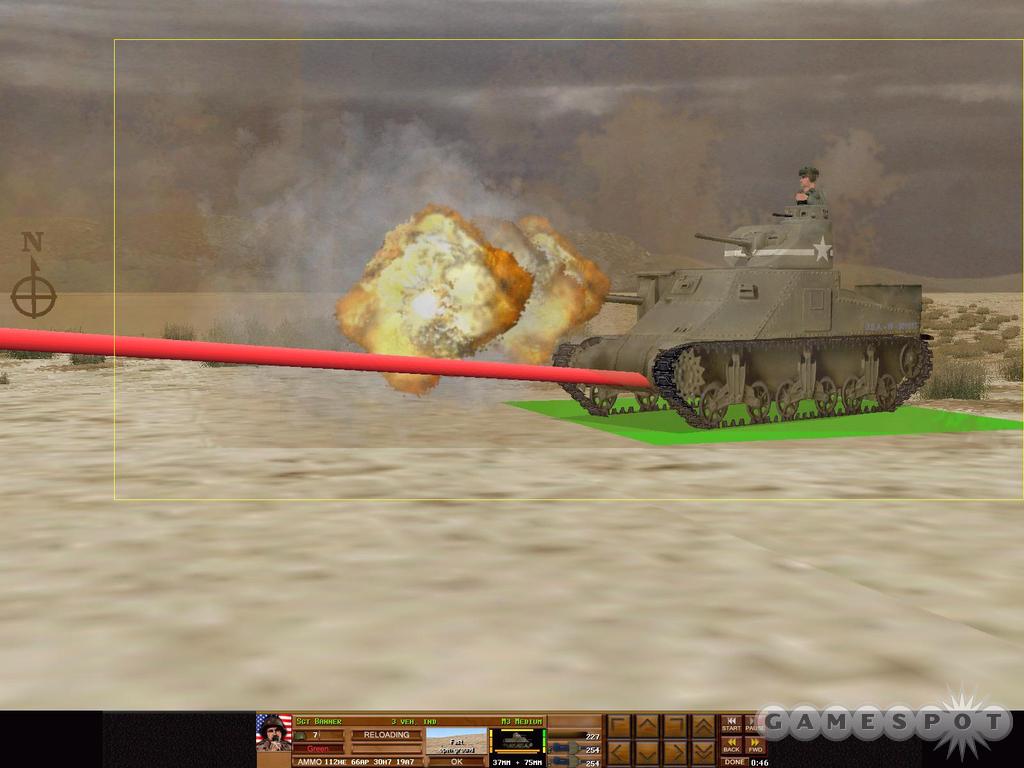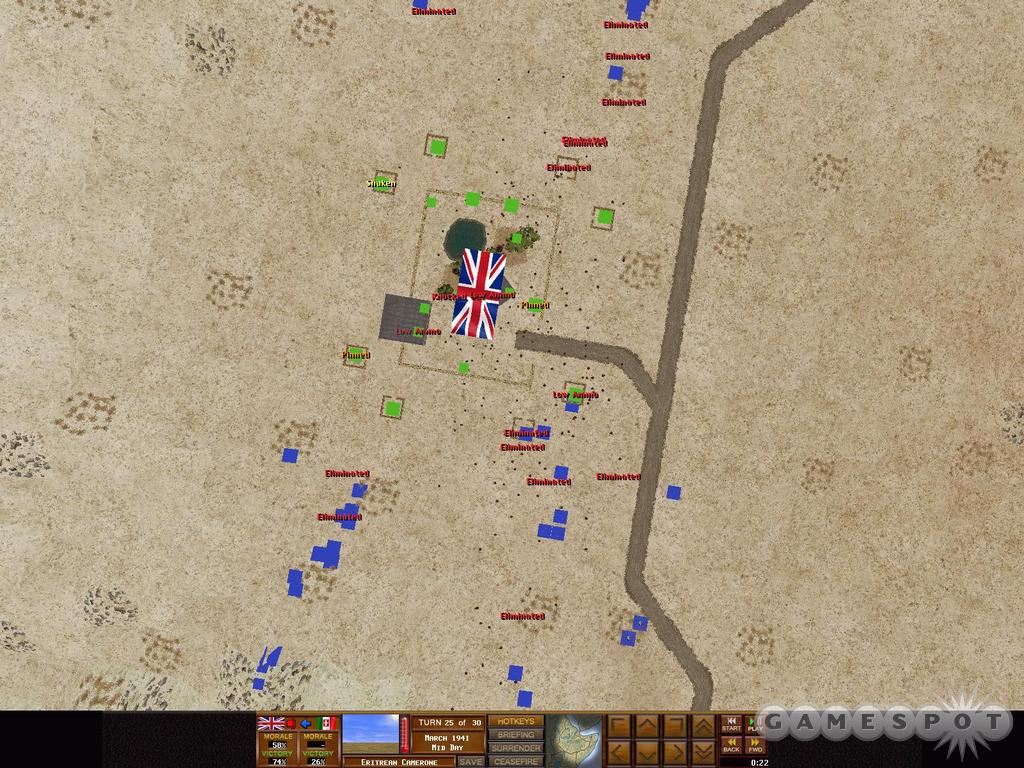Afrika Korps is the third installment of the acclaimed Combat Mission series, and like its predecessors, it represents the absolute state-of-the-art in tactical wargames. While it substantially uses the same engine as the last Combat Mission game, Barbarossa to Berlin, it provides dozens of new scenarios set in theaters uniquely suited to emphasize the strengths of the engine. It's a bit disappointing that the engine wasn't further refined to address its relatively few weaknesses, but Afrika Korps is still an excellent tactical wargame and a great addition to the series.

Like the other Combat Mission games, Afrika Korps is a turn-based, hardcore WWII wargame that eschews traditional hex-based gameplay in favor of more visceral 3D environments. Units are individual vehicles or infantry squads, and after each side sequentially delivers orders for a turn, the combat results are displayed in replayable 60-second movies. The movies are consistently engaging, since you can't directly control you units while the action unfolds--although the AI will automatically alter unit commands in response to battlefield developments. Unit morale and fatigue, experience, command, suppression, cover and concealment are all comprehensibly modeled, and the armor and armaments of hundreds of included vehicles and guns are appropriately rated. Battles can involve a handful of units that skirmish on a map as small as a single monitor screen, or they can scale up to massive confrontations between dozens of tanks that battle through expansive landscapes. Buildings, trees, and other terrain features are physically represented in the 3D environments, thus allowing you to intuitively gauge the most promising attack routes and defensive positions. The Combat Mission series does an unprecedented job in presenting a complex combat simulation in an incredibly accessible, rewarding fashion.
However, the series is also showing its age. When the first Combat Mission game came out in 2000, its 3D graphics were a huge improvement over the rudimentary or highly abstracted graphics in previous wargames. 2002's CM: Barbarossa to Berlin retained the same core engine but also featured numerous gameplay tweaks and improvements. There are a couple of notable gameplay modifications introduced by Afrika Korps--including desert dust clouds and a greater tendency for brush to catch fire--but otherwise the engine is identical to the one used by Barbarossa to Berlin. As a result, Afrika Korps feels like a stand-alone expansion pack with somewhat dated graphics.

Even though Afrika Korps doesn't feel as innovative as previous installments in the series, it still offers a tremendous amount of gameplay. Its battles are set in Africa, Italy and Crete, and they commence with the Italian-African offensive in late 1940 and end with the April 1945 skirmishes in Italy. While the Combat Mission engine does a capable job of simulating infantry battles, its real strength has always been rendering tank and armored vehicle clashes. Since the open African terrain offered little cover for infantry in WWII, tanks enjoyed unparalleled prominence on the theater's battlefields, and the Combat Mission engine is ideally suited for depicting the resulting armored duels. Virtually every series of vehicle from every nation that fought in Africa or Italy is available for use, including the multigunned American M3 Grants and the "Tinkertoy" Italian tankettes. Forces from 10 different nations are represented, including Canada, Poland, and Australia, and almost 70 historical (or historically inspired) battles and operations are included, thus allowing you to re-create any key confrontation set in these theaters.
The new terrain and unit graphics aren't exactly representative of the bleeding edge in 3D graphics, but they're appropriately detailed and do a more than serviceable job at drawing you into the action. The dust cloud effects not only make the desert battles unfold in a more realistic manner, but they present novel tactical challenges. The distinctive settings also effectively vary gameplay, as desert battlefields that only offer dunes for cover play out considerably differently than do showdowns in the forested or urban landscapes of Italy. There's no music, but sound effects are generally great, since each gun and weapon type is represented distinctively. Units mutter phrases using their own native languages and accents, which is a great touch, even though the voice acting is pretty wooden and repetitive.
There's no single- or multiplayer campaign to wade through, but there are a few operations that string together multiple battles with the same pool of units. In addition to the prepackaged battles and operations, you can also create your own quick battles by randomizing or selecting the available forces, the setting, and the size of the battle. Given the scale of these tactical battles, it would be artificial to offer an encompassing Panzer General-style campaign. Still, the developers should have at least collated the battles in chronological order, or they could have collected related battles to give you some sense of accomplishment for fighting through major campaigns. While the stand-alone, discrete battles work fine in multiplayer games, they aren't packaged into a very compelling single-player game.
The biggest problem with the single-player game, however, remains the unchallenging AI. The AI is completely incapable of mounting any sort of large scale offensive or managing a mobile defense. While you can handicap yourself by giving the computer AI additional or more experienced units--or, alternatively, by weakening your own forces--doing so isn't particularly satisfying since the AI is still strategically inept. The tactical AI does a more capable job of adjusting unit commands in response to battlefield developments, but it still often makes inexplicable decisions. For instance, armored units consistently retreat under fire and haphazardly expose their flanks or trek across open terrain instead of taking advantage of available cover. The AI is unable to use suppressing fire, to initiate smoke bombardments, to use feints, or to lay ambushes, and as a result, it's a very poor opponent. Even modestly experienced Combat Mission players will get decisive victories over AI opponents in virtually every battle. The AI also does a poor job of pathfinding units between waypoints, thus forcing you to micromanage units around obstacles. The AI in Afrika Korps isn't any worse than it was in prior Combat Mission games, but it's disappointing that it hasn't improved either, since the poor AI strips any longevity from the single-player game. Fortunately, Afrika Korps is a fantastic multiplayer game, and players can establish a direct TCP/IP connection, use a single computer in hotseat mode, or play by e-mail.

While the other Combat Mission games were eventually packaged for retail release, Afrika Korps is currently only available by directly ordering it from www.battlefront.com. Despite being produced by a small developer, Afrika Korps is generally more feature-rich and polished than its more commercial wargame peers. There are, however, a few minor technical quirks and features that make evident its presumably modest production budget. There's still no way to conveniently adjust the game's resolution, so it will naturally default to your desktop setting. Fogging effects don't work with ATI video cards, and certain Nvidia and ATI drivers create additional problems, most of which are well documented in the game's reference guide. The 30-page printed QuickStart guide is certainly adequate for experienced players, but the more comprehensive manual is only provided as a PDF.
While it's a bit disappointing that Afrika Korps doesn't address any of the weaknesses of Barbarossa to Berlin, it's still a great wargame, and its tank-friendly and diverse environments make it the best installment in the series. Like its predecessors, Combat Mission: Afrika Korps manages to offer an incredibly complex tactical wargame in an accessible package.